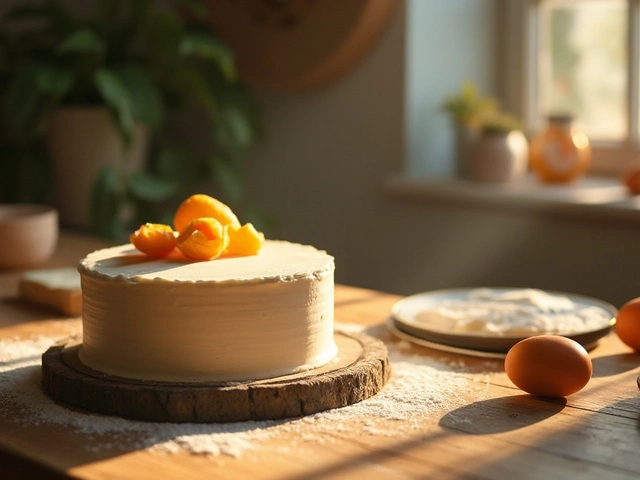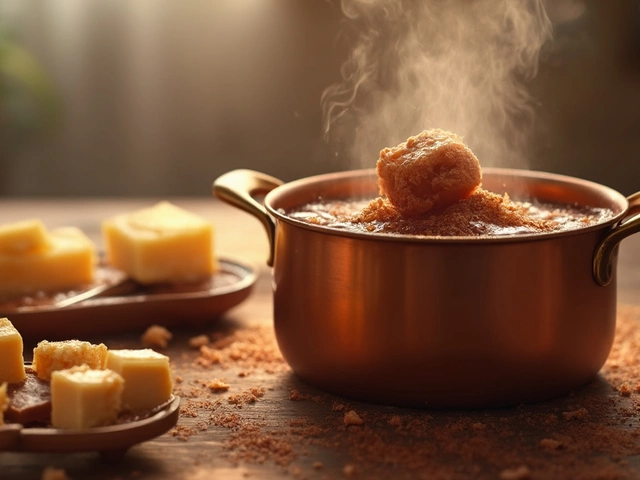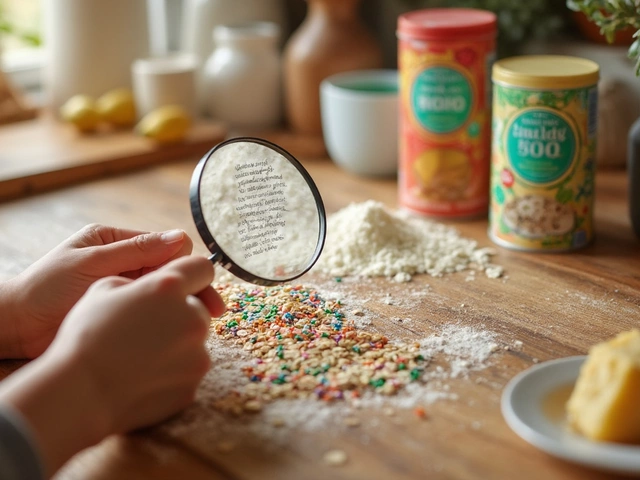
If you’ve ever stood in your kitchen, cheesecake dreams on the line, only to realise your fridge is missing heavy cream—it’s not just you. The same thing happens in homes all around Brighton and beyond (I’ve lived it). The question: is that lonely tin of evaporated milk in the cupboard the hero we need for a luscious, creamy cheesecake? But before you reach for the can opener, let’s untangle if this swap works, what magic (or mayhem) it might bring, and how to get the best out of your bake with what you have at hand.
How Does Evaporated Milk Stack Up Against Heavy Cream?
First, let’s settle what makes these two so different. Heavy cream is rich, with at least 36% fat, silky smooth, and ridiculously good at adding that thick, melt-in-your-mouth texture that classic cheesecakes are famous for. Cream’s fat content is what lets it whip up cloud-like and create structure that sets in the fridge. On the other hand, evaporated milk is just milk, but about 60% of its water content is simmered off, making it thicker and a bit caramelised. Its fat content, though, hovers closer to 6-8%—way less than cream. So straight out of the gate, you’re missing some richness.
Let’s talk what that means for cheesecake. Heavy cream adds not only fat but stability. Your cheesecake sets up firmer, slices cleaner, and tastes decadently creamy thanks to all that fat content. Evaporated milk? It brings more milky vibes, with a subtle caramel note, but not the same robust structure. When you use evaporated milk one-to-one instead of cream, you’ll get a softer, silkier texture. It’ll still taste good, but won’t slice as clean. Imagine more pudding-like, less bakery-style. For some, this is a win, especially if you prefer an ultra-soft dessert.
There’s another little twist. Evaporated milk tends to make batters slightly more liquid, so your bake time may need adjusting. Keep a close eye, especially if you use a water bath (the go-to for no-crack cheesecakes)—it’s easy for your middle to stay wobbly longer, since the structure’s weaker than you’re used to with cream. If you’re after numbers, check this comparison:
| Heavy Cream (per 100ml) | Evaporated Milk (per 100ml) | |
|---|---|---|
| Fat Content | 36g | 6g |
| Calories | 340 | 135 |
| Carbohydrates | 3g | 10g |
| Protein | 2g | 7g |
The fat drop changes mouthfeel and the tightness of the set. Some US and UK home bakers report a slightly caramelised undertone from evaporated milk—not unpleasant at all, but different from neutral cream.
Is that difference essential? It depends on your obsession level with perfect cheesecake. Purists swear by double cream (the British standard) or American heavy cream. But frankly, if the closest shop has shut and cravings are strong, rules bend. If you want a firmer set, you’ll need to tweak more than just swap out the cream (stay tuned for how below).
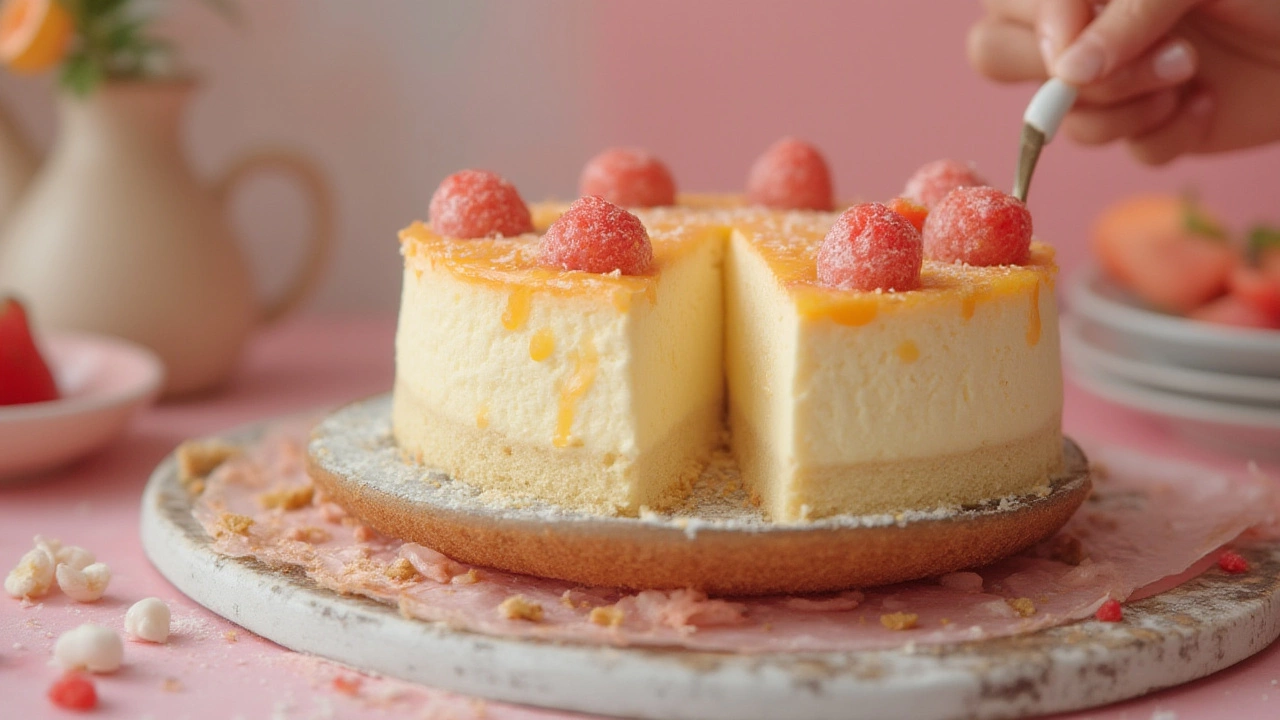
Getting the Best Results When Swapping: Tricks and Pitfalls
Right, say you’re ready to grab that can of evaporated milk. No shame; even pro bakers improvise. But for a swap to truly work in a cheesecake, you can’t just do a one-for-one trade and hope for the same magic. The batter will be thinner and set softer. So, let’s talk rescue missions and builder’s tricks to bring your cheesecake back from the brink of collapse.
- Thicken Up: Many recipes add a tablespoon of flour or cornflour/starch to their base, but if you use evaporated milk, try adding 2 tablespoons instead. This helps make up for the missing fat, giving your cheesecake more structure and less wobble.
- Reduce Total Liquid: Swap in evaporated milk, but cut back by 1-2 tablespoons per cup. It’ll help offset the extra water.
- Yolk Power: Egg yolks are nature’s little bundles of fat and thickener. Consider adding one extra yolk for every 500g cream cheese. Yolk means silk, set, and flavour—your cheesecake will thank you.
- Crush the Crack Worries: Because evaporated milk breaks easier under high heat, use a water bath (Bain-marie) and keep the oven at 150°C (300°F). Lower, slower, gentler, better set.
- Let It Chill, Baby: Chill your cheesecake for at least six hours—overnight if you can stand it. The longer, the better; evaporated milk desserts set slower.
- Vanilla Swoop: Because evaporated milk has a more pronounced taste, up your vanilla extract by half a teaspoon. It’ll balance out the caramel notes and keep flavours classic.
Here’s an unexpected bonus: using evaporated milk actually shaves a few calories off your cheesecake. Handy if you want a lighter dessert that still feels rich. But remember, these tricks only smooth out the differences—they don’t erase them. You’ll still get a softer, creamier cheesecake, leaning more towards a mousse than a dense New York style.
Ever tried a no-bake cheesecake with evaporated milk? There’s a fun trick—whip it to soft peaks first, then fold into your cream cheese mixture. It lightens the texture and gives an almost soufflé finish. But, you’ll want to chill this even longer (up to 12 hours is ideal). The chill time isn’t just waiting—it’s chemistry, helping protein bonds set for every lovely slice.
Don’t forget your base! When your filling is softer, a crunchier biscuit or graham cracker base gives nice contrast. Adding a tiny bit more melted butter to the crust helps hold it all together against that silkier filling too.
If you’re working from a family recipe, try a small test bake first. Halve the ingredients and bake in a muffin tin lined with cupcake cases. You’ll get a batch of mini cheesecakes to taste-test (or share, if you’re generous). It’s a clever way to see how your tweaks behave before you trust them on a big celebration cake.
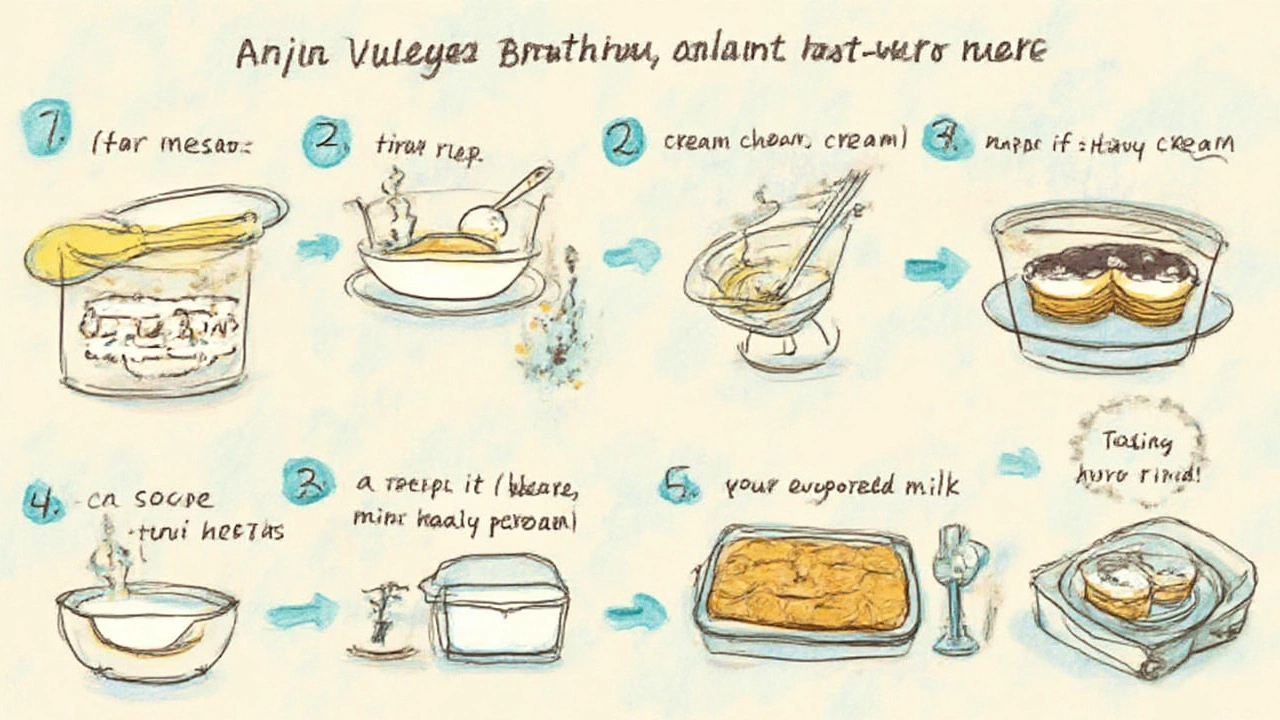
Creative Variations and Surprising Cheesecake Twists
Honestly, some of the best desserts come from a bit of forced creativity. Sometimes we discover delicious variations when we’re out of the "right" ingredient. Using evaporated milk instead of heavy cream gives cheesecake an edge you might not expect. Here’s a collection of ideas and flavour twists from real people (and my own Brighton experiments) who’ve tried it:
- Caramel Cheesecake: That mild caramel taste in evaporated milk pairs beautifully with a swirl of dulce de leche or caramel sauce inside the cheesecake mixture. Top with toasted hazelnuts.
- Tropical Mashup: Try adding coconut extract or a splash of Malibu (yes, the coconut rum) for a summer beach twist. Pineapple chunks folded in? Absolutely dreamy.
- Rich Chocolate: Mix cocoa powder into the filling and use evaporated milk. Top with chocolate shavings or a ganache glaze. The extra milk flavour makes the chocolate taste even deeper.
- Lemon Zing: Boost with lemon zest and juice to cut through the extra creaminess. A pinch more zest balances the sweetness and gives your cheesecake spring vibes even in deepest winter.
- Boozy Coffee: Kahlua, instant espresso powder, and a shot of evaporated milk make for a coffeehouse cheesecake that tastes like tiramisu and pudding had a posh baby.
Let’s not leave out the serious bakers: if you want to boost texture further, try a blend. Use half evaporated milk and half Greek yogurt or crème fraîche. It nudges the fat content higher, thickens things up, and brings a slight tang—perfect if you like a cheesecake with a bit of zip.
From home bakers in Cornwall making Cornish fair cheesecakes, to grandmothers in Manchester blending in evaporated milk for family birthdays, folks have been swapping for decades—even if the results aren’t an exact double for traditional cream cheesecakes, they’re still delicious and crowd-pleasing. Make sure you scrape your mixing bowl clean—the filling gets satiny smooth, with no weird aftertastes if you use quality vanilla and good cheese.
Here’s a pro tip borrowed from pastry chefs: to avoid water bath mishaps (because leaks happen), wrap your cheesecake tin in two layers of wide aluminium foil before placing in the water. An army of bakers swears this saves countless cheesecakes from soggy-bottom heartbreak—especially helpful with softer batters from evaporated milk bakes.
If you’re catering for friends with lactose intolerance, evaporated milk comes in dairy-free coconut versions that work as a surprisingly tasty swap. The cheesecake will taste of coconut, but in the best possible way. Pair with fresh berry compote for variety.
So, is using evaporated milk instead of heavy cream in cheesecake a wild idea? Not at all. It just needs a nudge or two—some extra yolk, more thickeners, a longer chill, and maybe embracing a new twist on an old favourite. Hungry now? Me too. Pass me the springform and a can opener.

